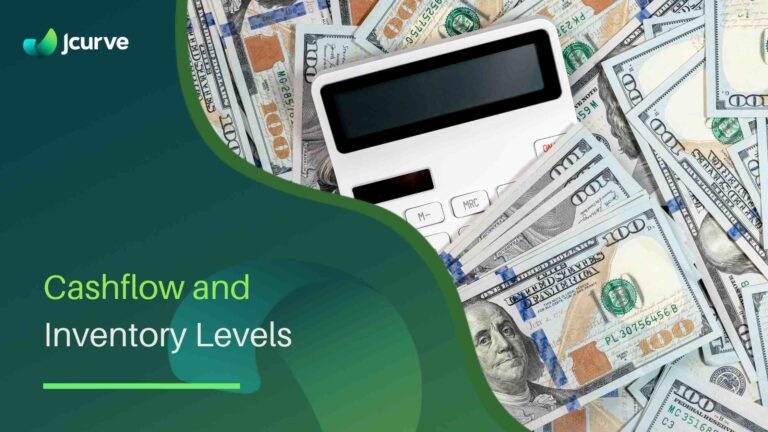Enterprise Resource Planning (ERP) is a software solution that integrates various business functions into a single, comprehensive system. By combining processes such as accounting, project management, procurement, and Inventory Management Systems, ERP ensures that all departments within a company can access and share information seamlessly. Its primary goal is to streamline and automate operations, thus enhancing efficiency and productivity.
What is Inventory Software?
Inventory software is a specialised tool crafted to assist Singaporean businesses in managing their stock efficiently. It monitors inventory levels, orders, sales and deliveries, facilitating a smooth transition of goods from manufacturers to warehouses and, ultimately, to retail outlets across Singapore and beyond.
Equipped with features like real-time updates, Inventory Management Software can automate the supply process, aiding businesses in maintaining the right stock levels. The advantages of using inventory software are plentiful, including minimising the risk of stockouts and overselling, as well as refining order fulfilment processes. In industries such as logistics and retail, where profit margins can be tight, utilising such a tool can offer a significant competitive edge in the Singapore market.
How are they Different?
Focus:
- ERP: Delivers an all-encompassing solution that connects all business operation functions.
- Inventory Software: Focuses solely on managing and tracking inventory levels.
Capabilities:
- ERP Systems: Offer broad automation of business processes, enhanced reporting and decision-making tools, superior visibility across the organisation, and improved supply chain management, including collaboration features across departments.
- Inventory Software: Provides real-time updates on inventory, automation of supply chain specifics, and direct control over stock levels.
Benefits of ERP
The benefits of ERP systems are extensive, but some of the key advantages for Singaporean businesses include automated and streamlined processes, enhanced visibility into business performance, optimised supply chain management, and improved collaboration with vendors and suppliers.
Automation and Streamlining Processes ERP systems are adept at automating and streamlining business processes. They eliminate the need for manual inventory management, reduce the likelihood of human errors, and offer real-time updates on inventory status. This automation saves valuable time and resources, enhances visibility into operations, and allows employees to focus on more strategic tasks.
Streamlined Reporting and Improved Decision Making ERP systems merge financial data with inventory data, enabling comprehensive financial reporting. Real-time inventory tracking provides accurate information on inventory costs and values, and automated inventory valuation reduces errors. Additionally, cost analysis tools offer deeper insights into financial performance.
Enhanced Visibility into Business Performance ERP provides enhanced visibility into business performance by integrating multiple tools to collect data about different aspects of the business. Accurate business analytics and forecasting become possible with ERP, aiding informed decision-making.
Optimised Supply Chain Management ERPs optimise supply chain management by integrating functions such as demand and inventory tracking, manufacturing processes, Warehouse Operation, logistics, and distribution management. They utilise real-time data to recommend the best purchase and transfer orders, reducing the risks of stockouts and understocking.
Improved Collaboration with Vendors and Suppliers ERP systems can improve collaboration with vendors and suppliers. Clear expectations for communication and reporting, key performance metrics, and cloud-based ERP systems with collaboration tools help establish valuable relationships.
Benefits of Inventory Software
While ERPs offer broad business management solutions, selecting the ideal Inventory Management Solution for your Singapore-based business can provide specific advantages, enhancing the control and management of stock. These software solutions are typically favoured by smaller businesses due to their specific focus and ease of implementation.
Automated Real-Time Tracking and Availability Updates Inventory Management Software ensures real-time tracking and updates on stock availability. This feature prevents overselling or underselling situations, improving customer satisfaction. Benefits include managing multiple warehouses, quickly locating items, and directing order fulfilment based on proximity to the customer and stock levels in Singapore.
Increased Accuracy of Inventory Counts and Orders Inventory Management Software improves inventory tracking and reduces errors, resulting in more accurate inventory counts and orders. Features like automated replenishment, real-time inventory tracking, inventory forecasting, and batch and serial number tracking all contribute to this accuracy.
Reduced Manual Labour Hours for Stocktaking & Reordering Inventory Management Software can significantly reduce manual labour for stocktaking and reordering. Automation eliminates the need for manual counting and tracking of inventory, resulting in time and cost savings. The software can also streamline the reordering process by automatically generating purchase orders based on predefined replenishment criteria.
Improved Customer Service with Accurate Order Fulfilment Accurate order fulfilment improves customer service by ensuring timely delivery and increasing customer satisfaction. Real-time inventory visibility, availability updates, and the ability to track the progress of orders all contribute to this outcome in Singapore.
Better Stock Control & Forecasting Capabilities With inventory software, businesses in Singapore can better control their stock and improve forecasting. Excess inventory can be reduced, understocking or overstocking can be eliminated, and inventory accuracy can be improved through accurate forecasting and analytics. Features like automated replenishment, real-time inventory tracking, inventory forecasting, and batch and serial number tracking enable better stock control.










